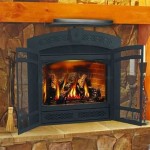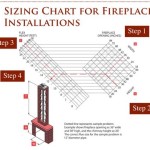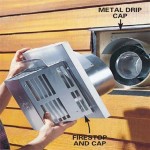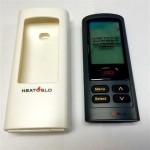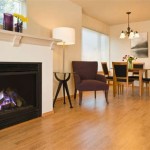Mini Electric Fireplace Heater: A Compact Solution for Supplemental Heat
The mini electric fireplace heater has emerged as a popular choice for individuals seeking supplemental heat in smaller spaces. These compact appliances offer a blend of aesthetic appeal and functional heating, making them suitable for bedrooms, offices, apartments, and other areas where space is limited. This article aims to provide a comprehensive overview of mini electric fireplace heaters, encompassing their key features, benefits, operational principles, and considerations for choosing the right model.
Understanding the Fundamentals of Mini Electric Fireplace Heaters
Mini electric fireplace heaters operate on the principle of resistance heating. When electricity passes through a heating element, it generates heat, which is then circulated into the room. These heaters typically utilize either a fan-forced system or radiant heating. Fan-forced heaters employ a fan to blow air across the heated element, distributing warm air throughout the space. Radiant heaters, on the other hand, emit infrared radiation, which directly heats objects and individuals within its range. The inclusion of a simulated flame effect is a primary distinguishing factor for these devices compared to standard electric heaters. This visual element contributes to a cozy ambiance, emulating the appearance of a traditional fireplace without the associated maintenance and safety concerns.
The appeal of mini electric fireplace heaters lies in their portability and ease of installation. Most models are freestanding and require no permanent installation, simply needing to be plugged into a standard electrical outlet. This makes them ideal for renters or individuals who frequently relocate. Furthermore, numerous mini electric fireplace heaters are equipped with safety features such as overheat protection and tip-over shut-off, minimizing the risk of accidents.
These heaters are designed to provide supplemental heat, meaning they are not intended to be the primary heating source for an entire home. Their effectiveness is typically limited to smaller rooms or focused areas. The heating capacity is measured in British Thermal Units (BTUs) or watts, indicating the amount of heat the unit can produce per hour. Selecting a heater with the appropriate BTU or wattage rating for the room size is crucial for optimal performance and energy efficiency.
Key Advantages of Mini Electric Fireplace Heaters
Mini electric fireplace heaters offer several advantages over traditional heating methods and other types of supplemental heaters. These advantages contribute to their increasing popularity and widespread adoption.
Aesthetic Appeal: The simulated flame effect is a significant advantage. It provides the ambiance of a real fireplace without the mess, expense, and safety concerns associated with wood-burning or gas fireplaces. The flame effect can often be operated independently of the heating function, allowing users to enjoy the visual appeal even when heat is not required.
Portability and Ease of Use: Their compact size and lightweight design make them easy to move from room to room. The plug-and-play operation requires no specialized installation, making them convenient for individuals who lack technical skills. Simple controls, such as adjustable thermostat settings and on/off switches, further enhance their user-friendliness.
Safety Features: Modern mini electric fireplace heaters are equipped with various safety features to prevent accidents. Overheat protection automatically shuts off the unit if it reaches an unsafe temperature, preventing fires. Tip-over shut-off switches are activated when the heater is knocked over, immediately cutting off power to prevent hazards. These features make them a safer alternative to traditional space heaters, particularly in homes with children or pets.
Energy Efficiency: While not as energy-efficient as central heating systems, mini electric fireplace heaters can still offer localized heating benefits. By heating only the room being occupied, they can reduce overall energy consumption compared to heating an entire house. Many models also feature adjustable thermostat settings, allowing users to customize the heat output to match their comfort level and minimize energy waste.
Cost-Effectiveness: The initial purchase price of a mini electric fireplace heater is generally lower than that of larger electric fireplaces or traditional heating systems. Furthermore, the absence of fuel requirements (such as wood or gas) eliminates ongoing fuel costs. The cost of operation is dependent on electricity rates and usage patterns, but by using the heater only when and where needed, users can control their energy expenses.
Factors to Consider When Choosing a Mini Electric Fireplace Heater
Selecting the right mini electric fireplace heater requires careful consideration of several factors to ensure it meets individual needs and preferences. Evaluating these factors will contribute to a more satisfying and efficient heating experience.
Heating Capacity (BTUs/Watts): The size of the room to be heated is a primary consideration. A heater with insufficient heating capacity will struggle to maintain a comfortable temperature, while one with excessive capacity may waste energy. A general guideline is that 10 watts of power are needed to heat one square foot of space. Therefore, a 1,500-watt heater can effectively heat a room of approximately 150 square feet.
Heating Method (Fan-Forced vs. Radiant): Fan-forced heaters provide rapid and even heat distribution throughout the room. They are well-suited for quickly warming up a space. However, they can be slightly noisier than radiant heaters due to the fan operation. Radiant heaters offer a more gentle and localized heat, ideal for those who prefer a quiet and consistent warmth. They are also effective at heating objects and individuals directly, making them suitable for spot heating.
Flame Effect and Aesthetics: The realism and adjustability of the flame effect are important factors for those seeking the ambiance of a traditional fireplace. Some models offer multiple flame settings, adjustable brightness, and even log sets that mimic the appearance of burning wood. The overall design and finish of the heater should also complement the room's decor.
Safety Features: Overheat protection and tip-over shut-off are essential safety features to look for. These features minimize the risk of accidents and provide peace of mind, especially in households with children or pets. Some models also include cool-touch housings, preventing burns from accidental contact.
Thermostat and Controls: An adjustable thermostat allows users to precisely control the temperature output, maintaining a consistent and comfortable environment. Remote control functionality adds convenience, allowing users to adjust settings from across the room. Programmable timers can also be useful for automatically turning the heater on or off at specific times, optimizing energy efficiency.
Noise Level: Fan-forced heaters can produce a noticeable amount of noise. For those sensitive to noise, it is important to choose a model with a quiet fan operation or consider a radiant heater, which operates silently. Reading customer reviews and product specifications can provide insights into the noise level of different models.
Size and Portability: The dimensions and weight of the heater should be appropriate for the intended use and space. Compact and lightweight models are easier to move and store. Consider the available space and the frequency with which the heater will be relocated when making a decision.
Energy Efficiency and Cost of Operation: Look for models with energy-saving features, such as adjustable thermostat settings and programmable timers. Consider the electricity rates in the area and estimate the cost of operation based on anticipated usage patterns. Reading energy efficiency ratings and comparing the wattage of different models can help in making an informed decision.
Warranty and Customer Support: A reliable warranty provides protection against defects and malfunctions. Check the warranty terms and conditions before purchasing a heater. Good customer support can be valuable if any issues arise after the purchase. Reading customer reviews and researching the manufacturer's reputation can provide insights into the quality of their customer support.
Additional Features: Some mini electric fireplace heaters offer additional features, such as built-in humidifiers, air purifiers, or Bluetooth speakers. These features can enhance the overall functionality and value of the heater, but they may also increase the price. Consider whether these additional features are truly needed and worth the extra cost.
By carefully considering these factors, individuals can select a mini electric fireplace heater that meets their specific requirements, providing a combination of warmth, ambiance, and energy efficiency.

Ktaxon 1400w Small Electric Fireplace Indoor Free Standing Stove Heater Fire Flame Adjustable Com

Comfort Zone Mini Ceramic Tabletop Fireplace Heater In Black Mr Brands Llc

Mini Electric Fireplace Freestanding Heater 3 Gear Stove Adjustable Flame

Jmtresw Mini Electric Fireplace With Handle Desktop Heater For Home Bedroom Office Us Com

Homcom 26 Electric Fireplace Stove 1400w Freestanding Heater With Adjustable Temperature Overheat Protection Remote Control Timer 7 Brightness Settings White Aosom

Turbro Suburbs Ts17q Infrared Electric Fireplace Stove 19 In Freestanding Heater With 3 Sided View 1500 Watt Ivory The Home Depot

Costway 14 Black Portable Electric Fireplace Heater With Realistic Fl Us

Donyer Power 1500w Mini Electric Fireplace Tabletop Portable Heater 14 Black Metal Newegg Ca

Gymax 14 Portable Electric Fireplace Heater Mini Freestanding Infrared Stove 1 Unit Fry S Food

White Mini Electric Fireplace With Modern Design Small Room Heater China Made In Com

